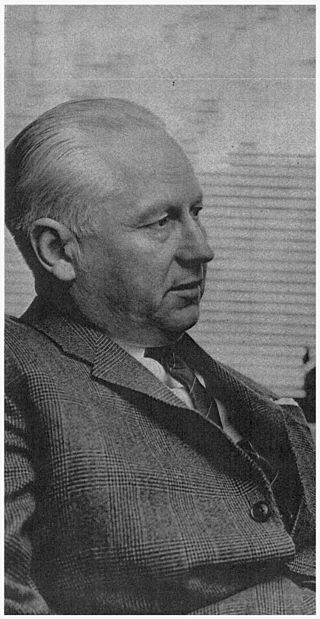
Finno-Ugric or Finno-Ugrian (Fenno-Ugrian) is a traditional grouping of all languages in the Uralic language family except the Samoyedic languages. Its formerly commonly accepted status as a subfamily of Uralic is based on criteria formulated in the 19th century and is criticized by some contemporary linguists such as Tapani Salminen and Ante Aikio as inaccurate and misleading. The three most-spoken Uralic languages, Hungarian, Finnish, and Estonian, are all included in Finno-Ugric.

The Uralic languages form a language family of 42 languages spoken predominantly in Europe and North Asia. The Uralic languages with the most native speakers are Hungarian, Finnish, and Estonian. Other languages with speakers above 100,000 are Erzya, Moksha, Mari, Udmurt and Komi spoken in the European parts of the Russian Federation. Still smaller minority languages are Sámi languages of the northern Fennoscandia; other members of the Finnic languages, ranging from Livonian in northern Latvia to Karelian in northwesternmost Russia; and the Samoyedic languages, Mansi and Khanty spoken in Western Siberia.

Moksha is a Mordvinic language of the Uralic family, with around 130,000 native speakers in 2010. Moksha is the majority language in the western part of Mordovia. Its closest relative is the Erzya language, with which it is not mutually intelligible. Moksha is also possibly closely related to the extinct Meshcherian and Muromian languages.

Nenets is a pair of closely related languages spoken in northern Russia by the Nenets people. They are often treated as being two dialects of the same language, but they are very different and mutual intelligibility is low. The languages are Tundra Nenets, which has a higher number of speakers, spoken by some 30,000 to 40,000 people in an area stretching from the Kanin Peninsula to the Yenisei River, and Forest Nenets, spoken by 1,000 to 1,500 people in the area around the Agan, Pur, Lyamin and Nadym rivers.

The Permic or Permian languages are a branch of the Uralic language family. They are spoken in several regions to the west of the Ural Mountains within the Russian Federation. The total number of speakers is around 950,000, of which around 550,000 speak the most widely spoken language, Udmurt. Like other Uralic languages, the Permic languages are primarily agglutinative and have a rich system of grammatical cases. Unlike many others, they do not have vowel harmony.

Indo-Uralic is a controversial language family consisting of Indo-European and Uralic.
Proto-Uralic is the unattested reconstructed language ancestral to the modern Uralic language family. The hypothetical language is thought to have been originally spoken in a small area in about 7000–2000 BCE, and expanded to give differentiated Proto-Languages. Some newer research has pushed the "Proto-Uralic homeland" east of the Ural Mountains into Western Siberia.

The Finnic (Fennic) or Balto-Finniclanguages constitute a branch of the Uralic language family spoken around the Baltic Sea by the Baltic Finnic peoples. There are around 7 million speakers, who live mainly in Finland and Estonia.
The Uralic Phonetic Alphabet (UPA) or Finno-Ugric transcription system is a phonetic transcription or notational system used predominantly for the transcription and reconstruction of Uralic languages. It was first published in 1901 by Eemil Nestor Setälä, a Finnish linguist.

The Finnish Academy of Science and Letters is a Finnish learned society. It was founded in 1908 and is thus the second oldest academy in Finland. The oldest is the Finnish Society of Sciences and Letters, which was founded in 1838.

The Finno-Permic or Finno-Permian languages, sometimes just Finnic or Fennic languages, are a proposed subdivision of the Uralic languages which comprise the Balto-Finnic languages, Sámi languages, Mordvinic languages, Mari language, Permic languages and likely a number of extinct languages. In the traditional taxonomy of the Uralic languages, Finno-Permic is estimated to have split from Finno-Ugric around 3000–2500 BC, and branched into Permic languages and Finno-Volgaic languages around 2000 BC. Nowadays the validity of the group as a taxonomical entity is being questioned, and the interrelationships of its five branches are debated with little consensus.

Uralic–Yukaghir, also known as Uralo-Yukaghir, is a proposed language family composed of Uralic and Yukaghir.

The Ob-Ugric languages are a commonly proposed branch of the Uralic languages, grouping together the Khanty (Ostyak) and Mansi (Vogul) languages. Both languages are split in numerous and highly divergent dialects. They, along with Hungarian, are often thought to comprise the Ugric branch of the Uralic languages, though the acceptance of Ugric is less frequent than acceptance of Ob-Ugric.

Kaarle Krohn was a Finnish folklorist, professor and developer of the geographic-historic method of folklore research. He was born into the influential Krohn family of Helsinki. Krohn is best known outside of Finland for his contributions to international folktale research. He devoted most of his life to the study of the epic poetry that forms the basis for the Finnish national epic, the Kalevala.

Gustaf John Ramstedt was a Finnish diplomat, orientalist and linguist. He was also an early Finnish Esperantist, and chairman of the Esperanto-Association of Finland.

Erik Alfred Torbjörn "Björn" Collinder was a Swedish linguist who was Professor of Finno-Ugric languages at Uppsala University.

The Proto-Uralic homeland is the hypothetical place where speakers of the Proto-Uralic language lived in a single linguistic community, or complex of communities, before this original language dispersed geographically and divided into separate distinct languages. Various locations have been proposed to be the Proto-Uralic homeland.

Paavo Ilmari Ravila was a Finnish linguist and rector of the University of Helsinki.

Arvo Martti Oktavianus Räsänen was a Finnish linguist and turkologist. He operated as a docent of turkology at University of Helsinki from 1926 forwards, and as an additional professor of Turkic philology from 1944 to 1961.
Moksha names are the personal names among people of Moksha language and culture generally consist of a given name, a patronymic, and a family name.

















